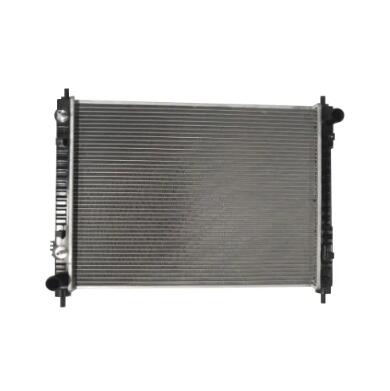Essential Maintenance Tasks for Automotive Aluminum Plastic Radiators
2024-09-10
Automotive aluminum plastic radiators are widely used due to their lightweight nature, high thermal efficiency, and corrosion resistance. To ensure optimal performance and a long lifespan, these radiators require regular maintenance. In this blog, we will explore the essential tasks to keep your radiator functioning properly and how to prevent common issues like overheating and leaks.
1. Regular Coolant Inspection and Replacement
One of the most important maintenance tasks for an aluminum plastic radiator is to regularly inspect and replace the coolant.
- Coolant Levels: Regularly check the coolant levels in the reservoir to ensure that the radiator has enough fluid. Low coolant can lead to overheating and damage to the engine.
- Coolant Quality: Over time, the coolant can degrade, becoming contaminated with debris and dirt, reducing its effectiveness. It’s recommended to flush and replace the coolant every 30,000 to 60,000 miles, depending on the vehicle manufacturer’s guidelines.
2. Radiator Flush
A radiator flush is necessary to remove any buildup of deposits, rust, or debris that can accumulate over time. These contaminants can block the flow of coolant and reduce the radiator’s efficiency.
- Procedure: A radiator flush involves draining the old coolant, filling the system with a cleaning solution, running the engine, and then draining and refilling the system with fresh coolant.
- Frequency: It is recommended to perform a radiator flush every 1 to 2 years to maintain the radiator’s health and prevent corrosion.
3. Inspect for Leaks
Aluminum plastic radiators are prone to leaks, especially in the plastic tanks and seals. Regular inspections can help catch small leaks before they become larger issues.
- Signs of Leaks: Look for visible signs of coolant leaks, such as puddles of coolant under the vehicle or dried coolant residue on the radiator itself. Also, check for any unusual temperature fluctuations on the dashboard temperature gauge.
- Solution: Small leaks can sometimes be repaired using a radiator sealant, but for larger or persistent leaks, the radiator may need to be replaced.
4. Clean the Radiator Externally
Dirt, debris, and insects can accumulate on the outside of the radiator, reducing airflow and causing the engine to overheat.
- Cleaning Process: Use compressed air or a soft brush to clean the radiator fins and remove any debris. Avoid using high-pressure water, as it can damage the delicate aluminum fins.
- Frequency: Cleaning the exterior of the radiator should be done every few months, especially if the vehicle is driven in dusty or off-road conditions.
5. Inspect Radiator Hoses
The radiator hoses are critical for transporting coolant between the radiator and the engine. Over time, hoses can deteriorate, crack, or become loose, leading to coolant leaks or poor circulation.
- Check for Wear: Regularly inspect the hoses for signs of wear, such as cracks, bulges, or soft spots. Replace any hoses that show signs of damage or are more than 5 years old.
- Tighten Clamps: Ensure that the hose clamps are securely tightened to prevent coolant leaks.
6. Check the Radiator Cap
The radiator cap plays an essential role in maintaining the pressure within the cooling system. A faulty radiator cap can cause pressure loss, leading to overheating.
- Test for Pressure: A radiator cap should be tested for its ability to maintain the correct pressure. If it’s not functioning correctly, replace it with a new one.
- Visual Inspection: Check the cap for any cracks, corrosion, or damage, and replace it if necessary.
Conclusion
Proper maintenance of your automotive aluminum plastic radiator is crucial to prevent overheating, extend its lifespan, and avoid costly repairs. By performing routine checks, coolant replacements, and cleaning, you can ensure that your radiator runs smoothly and efficiently. Incorporate these maintenance tasks into your regular vehicle upkeep to keep your engine cool and your vehicle performing at its best.



